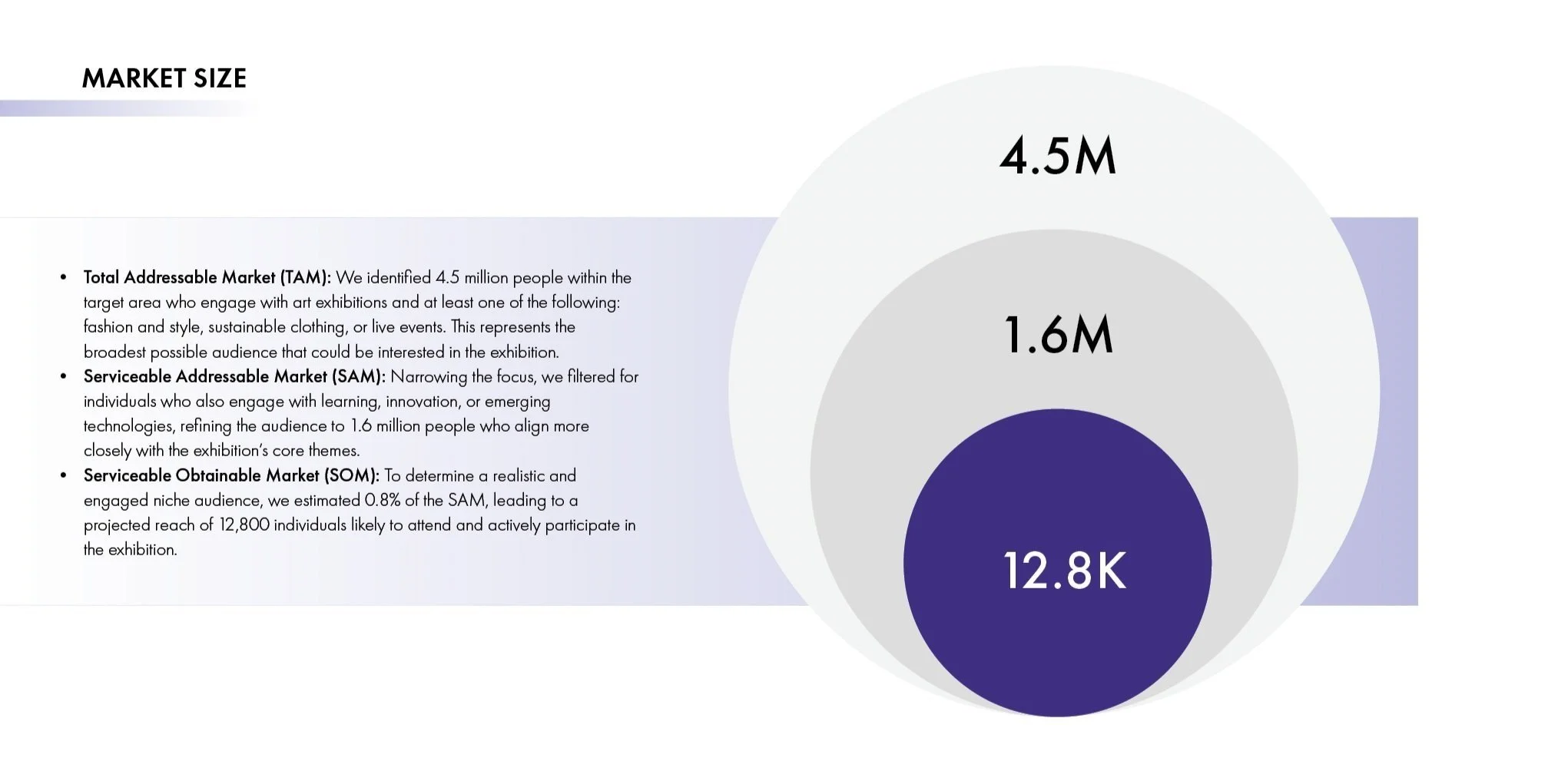
PART II:
RESEARCH
GYLD is an evolving design practice dedicated to creating pop-up experiences that showcase emerging biomaterial innovators and foster collaborations between material scientists and fashion designers. More than just a retail concept, we craft immersive spaces where the future of materials comes to life—at the intersection of craft, innovation, and design.
The Research
GYLD is built on deep industry research, developed through a dual-track approach that combines design research—including landscape analysis, market research, and in-depth qualitative interviews—with hands-on lab experimentation with biomaterials. This seven-month research process shaped our strategy for GYLD, identifying key barriers and opportunities in biomaterial adoption within the fashion industry.
GYLD is progressing into its next phase, concentrating on finalizing the spatial design for our first pop-up and solidifying partnerships with leading biomaterial designers. At the same time, we’re working with sustainable finance experts to shape our business model, ensuring long-term profitability, sustainability, and a positive environmental impact.
A dual track approach:
Hands-on Experimentation + Design Research
INSIGHT
Through numerous iterations with SCOBY, many experiments failed to yield a viable batch, highlighting the instability and scalability challenges of working with living materials. These difficulties not only exposed the limitations of biomaterial innovation but also revealed a need for focused spotlight on these materials to receive the investment and attention they deserve.
This insight directly influenced GYLD’s business model. By offering a platform for collaboration and visibility, we aim to bridge the gap between cutting-edge materials and the resources necessary for their scalability and success in fashion.
LAB RESEARCH
PROCESS
As part of my exploration into sustainable design, I adopted the Material-Driven Design (MDD) methodology, which centers material properties as the starting point for innovation and application. This allowed me to experiment iteratively with SCOBY (Symbiotic Culture of Bacteria and Yeast), a regenerative, biodegradable material that challenges traditional approaches to fashion and design. We leveraged MDD application as a case study to expose key challenges and pain points in biomaterial innovation.
QUALITATIVE INTERVIEWS
OVERVIEW
We conducted 10 in-depth, qualitative interviews across industries, including biomaterial innovators, fashion professionals, academic experts, and target consumers, to gain insights into the biodesign space.
KEY INSIGHTS
Scaling-Up: One of the greatest challenges in this field is the difficulty of scaling production processes.
Siloed Research: A lack of cross-industry collaboration and fragmented development processes create inefficiencies and hinder standardization.
Funding Issues: Smaller studios face significant barriers in securing funding, limiting their ability to invest in advanced technologies and scale production.
Consumer Trust: The absence of clear communication erodes consumer confidence in new materials.
Value Proposition: Innovators struggle to effectively communicate the benefits of biobased materials to both consumers and investors.
CONCEPT 1
Living Futures emerged as an initial concept based on key insights from our lab research, literature review, and industry interviews. This immersive exhibition blends storytelling, spatial design, and regenerative materials to offer a multi-sensory exploration of the evolving relationship between fashion and nature.
MARKET RESEARCH
CONCEPT TESTING
METHODOLOGY
This study employed a qualitative concept testing methodology to evaluate the exhibition design concept and gather comprehensive feedback from key stakeholders within the system. A purposive sampling strategy was utilized to ensure diverse perspectives, encompassing individuals ranging from bio-material designers to fashion journalists and investors. This selection aimed to capture a holistic understanding of the concept’s potential impact and identify critical factors influencing its success.
Brief, structured interviews, lasting 20-30 minutes, were conducted. These “burst interviews” consisted of 4-5 open-ended questions designed to elicit qualitative insights and detailed observations.
Data analysis involved a thematic approach, where observations from each interview were systematically reviewed and synthesized to identify recurring patterns and key insights. These insights will inform the refinement of the concept and guide the development of a prototype.
As of the current stage, 12 interviews have been completed. We have already reached out to over 20 stakeholders and are actively pursuing further engagement to expand the participant pool and ensure a more comprehensive and robust evaluation of the exhibition design concept.











